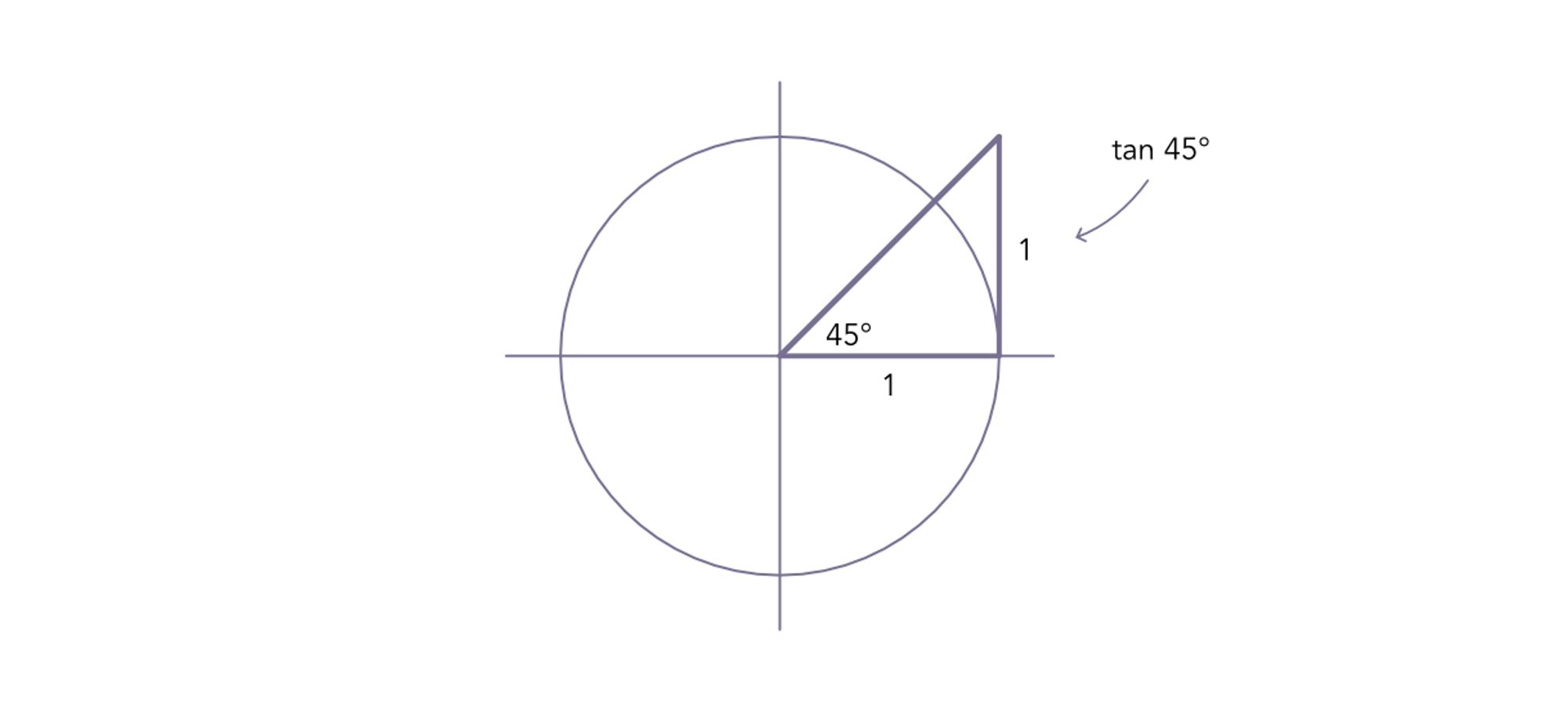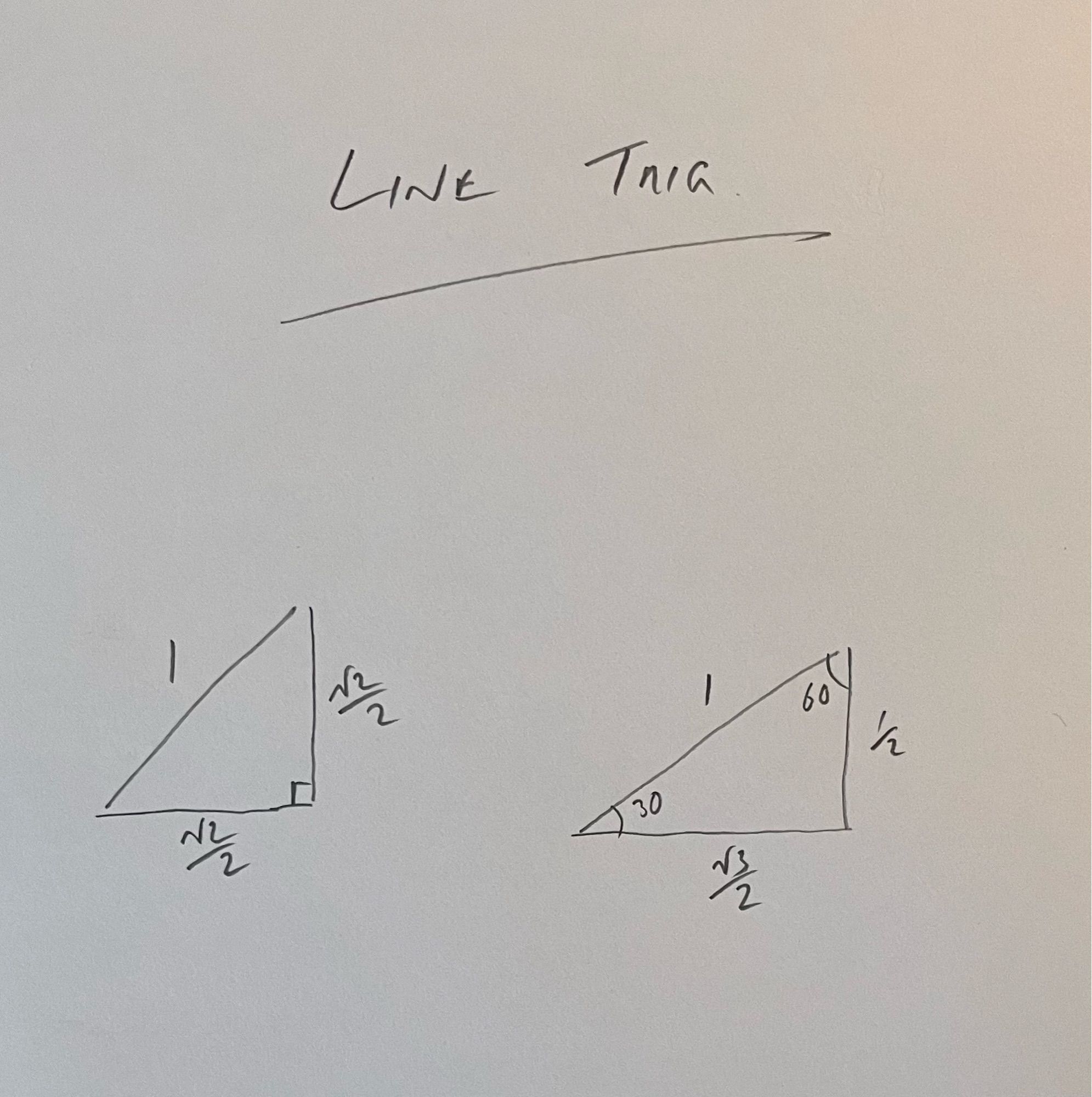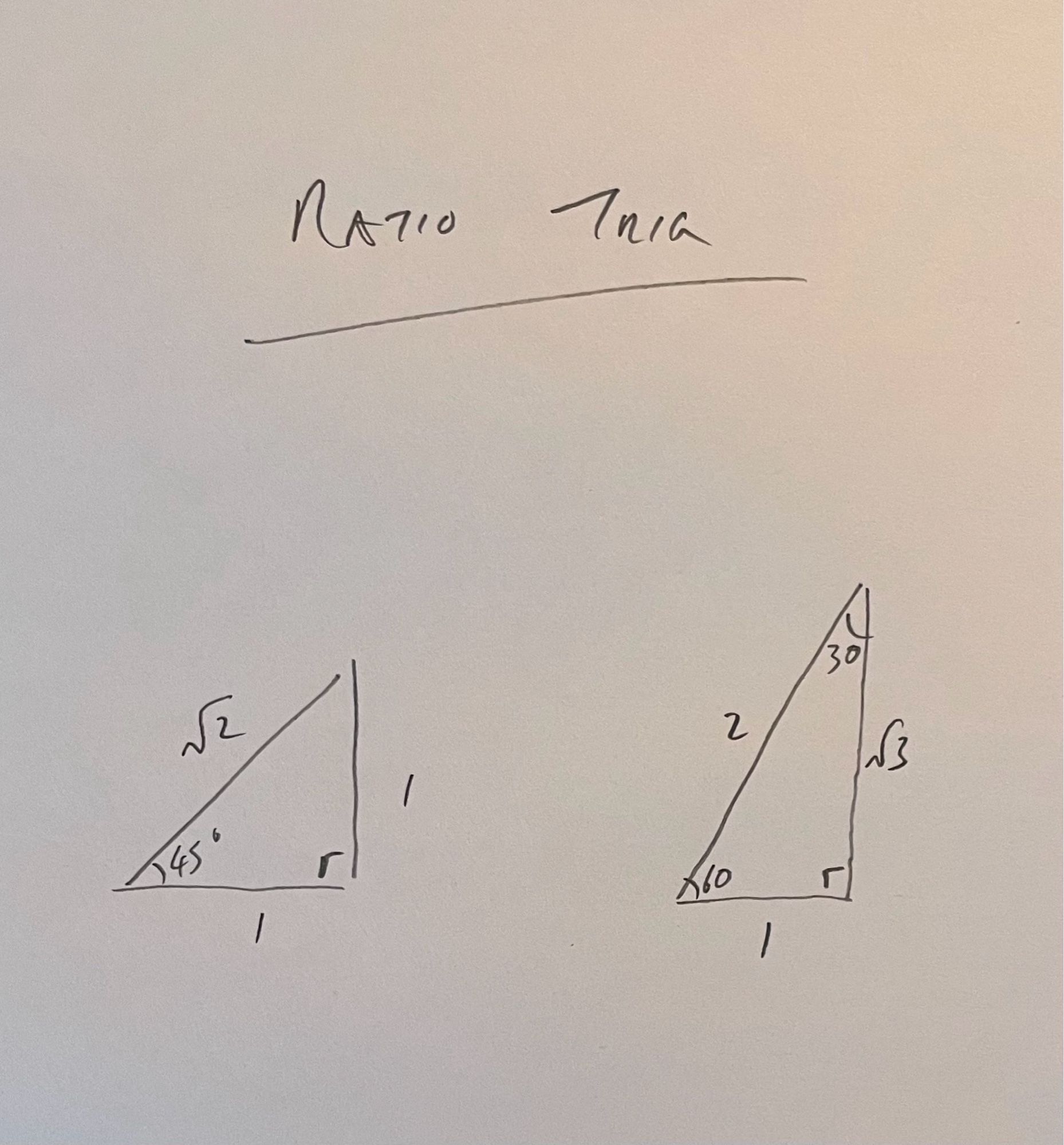Just lovely!
Feels more like ‘Today we have done (drum roll) focusing!!’
But you’re not really memorising more triangles my way, you’re just remembering the relationships required to build the triangles you need. I think that’s different.
Ah I see. I struggle with ‘memorise this’ in my own learning. I always have to build what I need. My ‘on the fly’ usually involves me having to re-build knowledge. I agree the ratio ‘special triangles’ are more efficient (if you can remember them!) … it’s just that I struggle working that way.
But you're thinking in ratios still ;-) For me, tan is a length. • tan 45°: Draw out tan 45° ...(base =1, angle 45°) ... realise that 45° ⇒ the vertical will be 1 too. • tan 60°: Draw out tan 60° ... (base =1, angle 60°) ... realise you can scale a sin 60° triangle. No ratios in sight :-)


The lineTrig ones are what you’d use on a unit circle to build, say, a basic sine table of 24 values; they’re your starting point. I don’t think of them as ‘special’ to be honest. And obviously the ratioTrig ones are just scaled versions of these to give nice numbers. That’s how I see it.


As for the ‘special’ triangles, well, they’re specific to trig-as-ratios … the ‘special’ triangles for trig-as-lengths are different!
If you start trig from a similar triangles perspective (with sin, cos, tan as lengths) then the multipliers are just a nice procedural framework that sits on top of the maths.
So for 14 ÷ 3 = 4 rem 2 you’d say ‘we’re left with 2 out of the 3 we’d need to make a whole … and 2 out of 3 is ⅔’ ? I could get use to that :-)
Good question. So 1 is left over. • 2 goes into that 1 ‘half times’. • ½ of 2 goes into the leftover 1. • That 1 still needs to be divided by 2 … and 1 ÷ 2 is a ½. Hmm, not so easy so say! I find myself swithering between partitive and quotative thinking. I tend to say the third option.